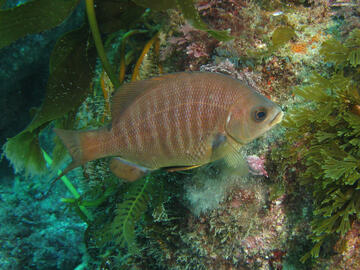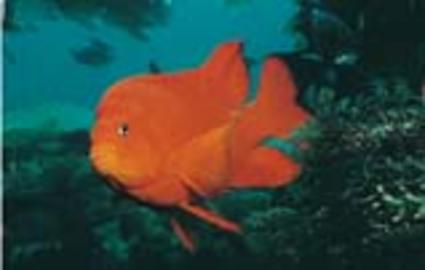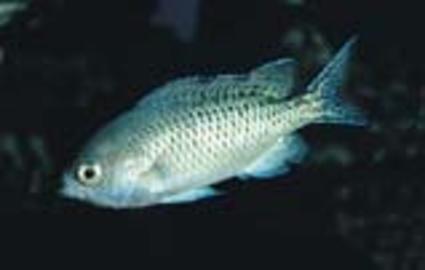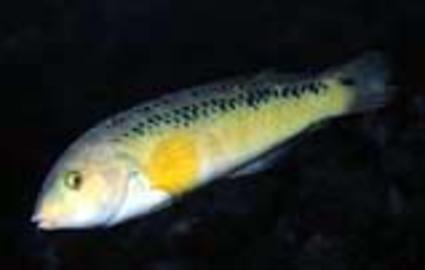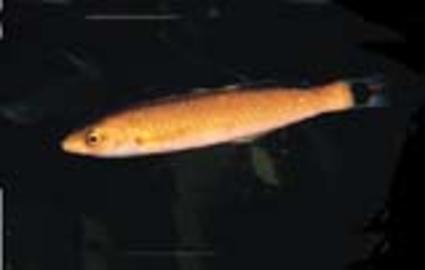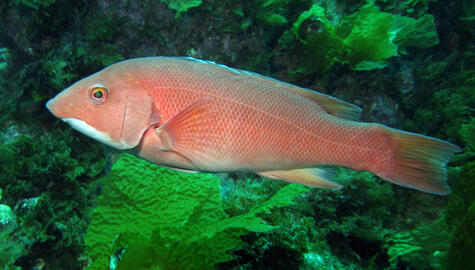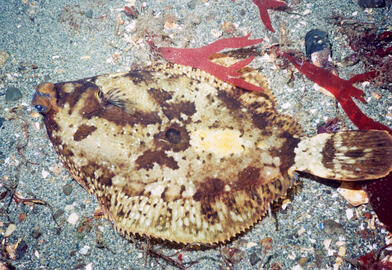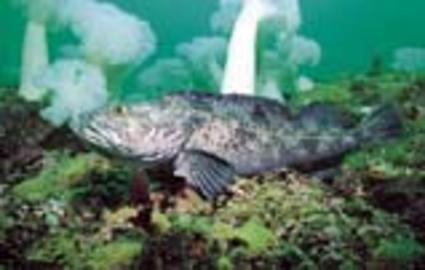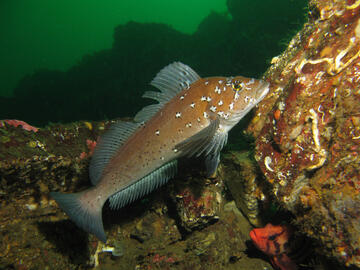Thin-bodied.. Silvery with coppery sheen, often with bluish spots. Abundant to common N. California to B.C.; uncommon central and S. California.
Thin-bodied; football shaped profile. Silvery, tinted with shades of orange to reddish brown. Large dark lips. Occasional central to S. California; uncommon to rare N. California.
Thin, oval shaped body; tail deeply notched between large rounded lobes. Aggressively territorial. Protected from any type of harvest as the California state marine fish. Abundant S. California; occasional to rare central California.
Usually blue border on dorsal, anal, and tail fins. Typically swim in open water in large aggregations. Abundant to common S. California, occasional central California.
TP generally >12inches, green to lue-green and occasionally orange. IP typically between 5 and 12 inches, yellow to orange or orangish brown. Occasional S. California.
Two distinct color phases, terminal and initial. Older TPs develop a bulbous limp on nape. Occasional to uncommon central California; formally common but numbers greatly reduced by overfishing, especially spearfishing of large TP.
Mottled, spotted and blotched in rich shades of brown with occasional white spots. Occasional S. California to SE Alaska.
Numerous dark spots and several darkish blotches. Can lighten and darken with background. After mating, males guard masses of white eggs; guarding males often dark black. Occasional Alaska through California.
Pair of small cirri above eyes and another tiny pair between eyes and dorsal fin. Five lateral lines. Abundant to common Alaska to central California, rare S. California.


